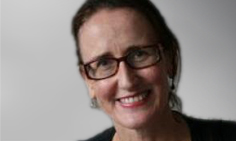IN 1979 Roald Dahl published a novel that was definitely not aimed at his usual market of primary school children.
My Uncle Oswald tells the story of Oswald Hendryks Cornelius, an unscrupulous maverick and “the world’s greatest fornicator” who, in the early years of the 20th century, teamed up with a young woman called Yasmin Howcomely to pursue a singular business enterprise.
With the aid of a powerful aphrodisiac, the Sudanese blister beetle, they set about collecting the sperm of “great men” and selling it to women keen to bear the child of a king or musical genius.
A roll call of European royalty and great painters, writers and composers were seduced into becoming unwitting donors. Even Sigmund Freud made it on to the list.
Projects to create perfect babies — and to profit from the enterprise — have moved much closer to reality since Dahl wrote that book.
Around the same time My Uncle Oswald was published, Californian tycoon (and eugenicist) Robert K Graham set up the Repository for Germinal Choice, a sperm bank designed to reverse the genetic decay he believed was undermining America.
Graham initially planned to accept sperm from Nobel Prize winners only — and at least three did reportedly donate — but the lack of vigour in the sperm of these mostly elderly gentlemen soon forced him to recruit younger “geniuses” among college students and others.
Over the 20 years of the repository’s existence, more than 200 babies were conceived, not enough perhaps to achieve Graham’s aim of stimulating humanity’s ascent to “a new level of being”.
Grahams’ repository might be just a quirky footnote to human reproductive history if it weren’t for the fact that new genetic technologies are bringing the prospect of the new humans he envisaged ever closer.
Last month, Californian direct-to-consumer genetic testing company, 23andMe, was granted a US patent for a computer system designed to help prospective parents choose an egg or sperm donor based on the chances of any resulting offspring having particular desired characteristics.
These would include health outcomes, such as reduced risk of particular genetic diseases, but also personality type, physical characteristics such as height and other qualities such as likely athletic ability.
The company is not saying it can guarantee particular outcomes, but that comparing the genetic profile of the recipient parent with that of a range of potential donors allows it to determine which is most likely to tick the boxes on the parents’ wish list.
Want a future endurance athlete with brown eyes and a low risk of macular degeneration? Then donor x is your best option.
In one sense, this is only a step beyond current systems that allow prospective parents to browse de-identified information about donors and choose the one who, for whatever reason, most appeals.
But is it a step we want to take?
Belgian bioethicists writing about the 23andMe patent in Genetics in Medicine last week raised the question of whether the patent process should take into account the effect an invention might have on the wellbeing of society.
In Europe, inventions that “contravene morality” are ineligible for patenting, the bioethicists write.
No such stipulation applies in the US, although the Patent and Trademark office did reject a 1997 application for a patent related to creation of human/animal chimaeras, saying the law allowed exclusion of inventions deemed to be “injurious to the well being, good policy, or good morals of society”.
Interestingly, that application was made by developmental biologist Professor Stuart Newman in collaboration with social theorist Jeremy Rifkin, two men who had no intention of producing the human-chimpanzee hybrid they described.
In fact, theirs was a public-spirited attempt to prevent such efforts in the future by provoking public discussion and setting the precedent of a rejected application.
The patent now granted to 23andMe, on the other hand, is a commercial proposition, dangling the prospect of the perfect child before hopeful parents.
Uncle Oswald would have been proud.
Jane McCredie is a Sydney-based science and medicine writer.

 more_vert
more_vert
This article is just another in the list of your very intelligent, insightful and well researched ones Jane. You present facts rather than opinions and then draw logical conclusions from them that are always expressed within a clear ethical context
Hold on, is their a twist in the tail here? I guess that the above observation could possibly mean that your ovaries are worth ‘bottling!’ for the future and that perhaps that the moral decay prophesised for the USA by Mr Graham is already occurring as exemplified by that county’s increasingly bizarre market based approach to ethics and morality. The Havard School of Business trumping the Havard School of Medicine every time.